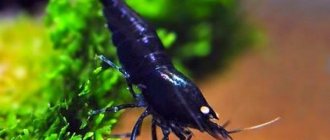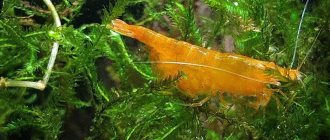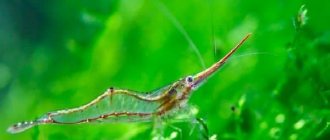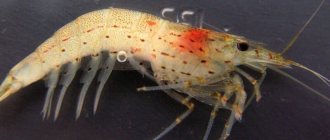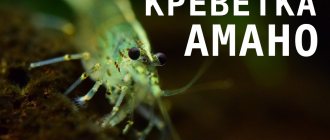Tiger or king shrimp - not every person can explain the difference between them. At the same time, it is difficult to imagine anyone who has not at least once seen these representatives of marine fauna or eaten them. Seafood delicacies are deservedly popular among lovers of tasty and healthy food. If you want to cook an unusual dish, you need to know what the main differences between tiger and king prawns are. To do this, you need to provide a definition of each type, and then compare them according to the main parameters.
a brief description of
Tiger prawns belong to the animal kingdom and belong to the phylum Arthropods. Seafood is not only obtained in warm waters, but also grown on special farms. Farm-raised shrimp in China, Vietnam, or Thailand typically have a meatier body and larger size than wild-caught shrimp.
Shrimp live at a depth of 40 to 60 meters. In the sunny time of the day they burrow into the bottom, and at night they go out to hunt.
Tiger shrimp are the largest species of shrimp. Their edible part is larger than that of their relatives, and they are more convenient to process. Shrimp meat contains easily digestible protein and is completely free of carbohydrates, which makes the product dietary and suitable for a proper and healthy diet.
What do they look like?
The shrimp are long and heavy; an individual can reach 650 grams or even 1 kilogram and grow up to 36 cm in length. There are three types of seafood in color: gray with pinkish or greenish stripes along the shell (depending on whether it is a female or a male), green and black.
An elongated body covered with a dense shell, a forked fin on the tail, a slightly flattened nose from which mustaches grow, and many thin legs are the main external characteristics of the tiger shrimp.
Taste
The shrimp meat tastes juicy, tender and soft. It is easily digested by the stomach and does not create a feeling of heaviness, as happens after eating pork.
Definition of concepts
Tiger shrimp are commonly called shrimp, which are a type of decapod crustacean. Their habitat is the Pacific or Indian oceans. They can also be caught in the Japanese or Mediterranean seas. This type of shrimp is suitable for artificial breeding. That is why special farms operate in different countries. In most cases, tiger shrimp are supplied from Thailand or China. Various Latin American countries are actively involved in production, breeding and supply. The name of the species comes from its appearance. The shrimp has stripes on its shell that visually resemble the pattern on the skin of a tiger. These marine inhabitants are much larger than the rest of their relatives. Weight can reach 0.5-0.7 kg. Body length indicators reach 0.3 meters. The meat of this type of shrimp has a soft and delicate taste. It is customary to distinguish 3 varieties: black, green, and ordinary.
King prawns are crustaceans that come in 8 different species. The peculiarity is that the name of the shrimp was not based on class or biological indicators, but due to a well-promoted trade brand. King prawns include only those that reach large sizes and impressive weight. The body length reaches 25 cm. Also included in the list of features is the fact that these species are bred in artificial farms. They can be prepared in different ways: baked, boiled or fried.
You may also be interested: Philosophy, mythology and religion - what are they and their differences
A characteristic feature is the presence of a large head. The tail is small.
Types of tiger shrimp
Tiger shrimp have three varieties, differing not only in shell color, but also in size:
- Green. The length of an adult reaches 23 cm. © https://ydoo.info/product/tigrovye-krevetki.html The color of the shell is light brown with greenish splashes and characteristic brown stripes.
- Black. Shrimp have a black shell with white stripes. An adult can grow up to 36 cm in length and weigh up to 1 kg. Most of this species is grown on special farms.
- Regular tiger. The carapace is light gray with stripes of dark green in males and light pink in females. The tail occupies approximately half of the body. Females lay eggs at the bottom of reservoirs, which is not typical for tiger shrimp.
Chilled and frozen tiger prawns do not have green or pink stripes along the shell. This is not a defect, but a natural phenomenon, since colors fade after death.
Table of basic parameters of maintenance, care and nutrition:
| What should be the volume of an aquarium for an aquarium shrimp? | from 12 liters. For comfort you need an aquarium of 20 liters or more |
| What should be the temperature in the aquarium? | from +17-23 °C |
| What pH should be in the aquarium? | from 6.5-7.2 pH |
| What should be the hardness of the water in the aquarium? | from 2-10° dkH |
| What should be the substrate for an aquarium? | soil 3-4 mm in size with an abundance of greenery, especially mosses |
| What kind of lighting should be in the aquarium? | moderate |
| What should be the movement of water in the aquarium? | moderate |
| Aquarium Shrimp Size | size of females up to 3 cm, males up to 2.5 cm |
| What does aquarium shrimp eat? | eats dry aquarium food for shrimp or fish |
| Who is compatible with in an aquarium? | get along with small non-aggressive fish species |
| Lifespan of an aquarium shrimp | up to 1.5-2 years |
Difference between tiger shrimp
To distinguish a tiger shrimp from another species, you should pay attention to the color and pattern of the shell, as well as the structure of the body, the length and massiveness of the tail.
From king prawns
Tiger shrimp are distinguished by the presence of dark stripes on the shell and their longer size. King prawns have a more massive lower body. The taste of their meat has a slight sweetness, while the meat of tiger prawns is similar to crayfish.
From langoustines
The most obvious difference between shrimp and langoustine is the presence of claws in the latter. Langoustine has a denser shell, colored deep orange or pale pink. The body structure of the langoustine resembles a lobster; it is larger and longer than a shrimp. The taste of the meat is similar, but the cooking methods are different.
Composition and calorie content of shrimp meat
In addition to the huge protein content - up to 20% of the total mass of pulp in raw specimens - shrimp are also distinguished by the excellent bioavailability of the substances present in its composition. Objectively speaking, shrimp meat is very rich in vitamins and microelements. In particular, they contain the following substances and their properties:
- Vitamin B12 is necessary for good appetite, energy and vigor, and good memory. It also prevents the development of anemia.
- Vitamin E - helps in tissue regeneration and blood sugar control.
- Sodium - helps maintain blood osmotic concentration.
- Phosphorus is important for the growth and mineralization of bones and teeth.
- Chromium is necessary for the breakdown and absorption of fatty compounds.
How many calories are in shrimp? The calorie content of boiled shrimp is about 95 Kcal per 100 g of product.
What is their chemical and nutrient composition? The indicators of BJU and KBJU vary depending on the type - you will find out how many carbohydrates, fats and proteins a particular product contains on its packaging.
How to choose?
It is recommended to purchase shrimp sold in packages rather than by weight, since in the first case you can track the packaging date and shelf life, but in the second there is no such possibility.
Packaging of frozen tiger prawns should not contain a lot of ice or snow, as these are the first signs that the product is refrozen.
The packaging must be hermetically sealed and free of holes or other damage. On the reverse side there should be information about the manufacturer indicating the date of capture and packaging.
In addition, high-quality shrimp, sold both in packages and by weight, should be free of stains, mechanical damage, and mucus. The shell should not be dried out or have a white coating. The shrimp head should not be black and the meat should not be yellow.
Fresh shrimp should smell pleasantly of the sea; a slight smell of algae or iodine is allowed. The presence of rotten, ammonia or any other unpleasant odor indicates that the product is damaged. The tails should be tightly curled, the color of the shell should be uniform, with a slight shine.
The straight tail of tiger prawns indicates improper freezing, as a result of which the meat will turn out tough and will contain fewer useful elements.
Reproduction
All shrimp are hermaphrodites, i.e. bisexual. The formation of male and female glands occurs over different periods of time. Sexual maturity of a young shrimp begins with becoming a male and only after three years does it become a female. Eggs at the formation stage look like a yellow-green mass.
Individuals mate very quickly, eggs soon appear, which subsequently become larvae. The process of larval formation takes from 10 days to a month.
The larvae are not capable of independently searching for food and lead a sedentary lifestyle.
How to store?
Fresh shrimp can be stored in a cool place (refrigerator or on ice) for 2 days, after which the seafood begins to spoil. To preserve shrimp for a longer time, they need to be frozen.
When frozen, shrimp can be stored for 2 to 3 months. After 3 months, seafood loses its taste and beneficial properties.
After defrosting, pre-boiled shrimp can be stored in the refrigerator for 3 days.
At room temperature, fresh shrimp can be stored for no more than 5 hours.
Possible harm to seafood
Only people with individual intolerance need to exclude tiger shrimp from their diet [14]. There are no other direct contraindications for seafood. But there are two important aspects to pay attention to - mercury and plastic. How do these substances compare to tiger prawns and should you really give up seafood?
Plastic
A colossal amount of human waste enters the world's oceans. One of the most dangerous elements is plastic. Plastic bottles thrown into the water do not sink, but remain on the surface. Over time, all the plastic containers accumulate into entire islands and destroy marine microflora. Scientists have identified several such clusters, but the most famous and dangerous is the Great Pacific Garbage Patch.
There are garbage patches like this in every ocean. They are formed by currents due to thrown garbage from the decks of ships and waste that comes from nearby continents.
Why is this harmful? Waste disrupts the natural balance and marine microflora. They gradually release harmful toxic components into the water, which infect the fish and the water itself. Moreover, numerous pieces of plastic are mistaken for food by fish and animals. Sea creatures constantly swallow lighters, bottle caps, and plastic bags, which, through a biological chain, end up on our plates.
Seafood lovers eat about 11,000 tiny plastic particles every year. Most of the waste remains inside the body and gradually poisons it.
What can be done? First of all, stop throwing garbage past specialized bins. If you simply refuse plastic bags in favor of paper or regular bags, you will already be making an invaluable contribution to the environmental sustainability of the planet.
What are the forecasts? If the situation does not change, then by the end of the century most seafood will become unfit for consumption. We will deprive ourselves of the world's oceans with our own hands and increase the amount of plastic consumed from 11 to 800 thousand or more per year.
Mercury
Best materials of the month
- Coronaviruses: SARS-CoV-2 (COVID-19)
- Antibiotics for the prevention and treatment of COVID-19: how effective are they?
- The most common "office" diseases
- Does vodka kill coronavirus?
- How to stay alive on our roads?
How did mercury appear in the world's oceans? Waterways are also exposed to mercury emissions, as is air. In the liquid itself and organic compounds, the concentration of the substance is minimal; marine life suffers most from mercury. Nature is primarily responsible for the concentration of heavy metal. Most mercury emissions are associated with the functionality of volcanoes. The remaining volume belongs to humanity - the combustion of coal at thermal power plants, gold mining, waste disposal and smelting of non-ferrous metals.
Algae is the first chain of infection. They absorb harmful compounds from the water and become dangerous. Organisms higher in the food chain ingest the algae and also become infected. This chain ends with large predators and humans. With each new organism, the concentration of a dangerous compound increases, and it is not fish that ends up on our table, but a set of toxic compounds.
Why is mercury dangerous? It is a heavy toxic metal that can exist in a liquid aggregate state at room temperature (the only metal with this property). The substance causes the development of serious neurological diseases. Elevated levels of mercury provoke Parkinson's disease, Alzheimer's disease, severe depressive conditions and autism spectrum disorders. High concentrations of mercury also cause high blood pressure, increased cholesterol levels and a maximum risk of heart attacks.
How to cook?
Shrimp can be prepared as an independent dish, used as an additional ingredient or the “star” of salads, appetizers and main courses. Shrimp meat can be boiled, fried, baked, and also used as a filling for making sushi, ravioli, pizza, etc.
How and how much to cook?
Cooking time varies depending on how you want to cook the shrimp: fresh, frozen, peeled, half peeled (in the shell but with the head removed).
You need to cook tiger shrimps so that the amount of water is 2 times more than seafood.
Fresh shrimp
You need to cook for 3-5 minutes in salted water (at the rate of 1 teaspoon of salt per 1 liter of water) with the addition of any spices of your choice, until the color of the shrimp turns orange or pink.
In a shell with a head
You can cook shrimp unpeeled, but pre-washed under running water. Cook in a deep saucepan in salted water (at the rate of 2 teaspoons of salt per 1 liter of water) for 4 or 5 minutes. If desired, you can add various spices to the water: peppercorns, bay leaves, dried herbs, etc.
Peeled frozen
Raw frozen peeled tiger prawns should be gradually defrosted, rinsed under running water, and then boiled in salted water (1 teaspoon of salt per 1 liter of water) for 3 to 5 minutes. Once the shrimp have turned pink or orange and fluffed up, they are ready.
Pre-boiled and frozen shrimp can be thrown into hot water without defrosting and cooked for 1-2 minutes.
How and in what to marinate?
Tiger prawns are marinated before frying in a frying pan or grill, or before baking in the oven.
Before starting the marinade, the shrimp must be washed and removed from the head, shell and esophagus. You can leave fins on the edge of the tail (for beauty).
- Delicious shrimp are obtained with a marinade prepared with olive oil, garlic, lemon juice, black pepper, salt and herbs. Marinating time is 2-3 hours.
- You can also marinate seafood in a mixture of soy sauce with grated ginger root, olive oil, black pepper, garlic and onion. Marinate for 30 minutes to 1 hour.
- Another popular option is white wine, olive oil, lemon juice, garlic, chili pepper, salt and any herbs. Marinate for 1-2 hours.
- Dry mix: paprika, brown sugar, salt and cumin, garlic, black pepper, leek and a little olive oil. Marinate for half an hour.
How to fry correctly?
You can cook shrimp in a frying pan or on the grill, with or without pre-marinade.
In a frying pan
It is best to use olive oil for frying. The pan must have a non-stick coating. Tiger shrimps are laid out only on a hot frying pan. Fry on each side for 2-3 minutes.
Grilled
You can fry each shrimp individually on a grid or skewered on a wooden stick. The mesh should be lubricated with vegetable oil, and the stick should be kept in water so that it does not start to burn. Frying time on each side is 2 minutes.
How to bake in the oven?
To bake, peeled and marinated shrimp should be placed on a baking sheet greased with vegetable oil, belly up, so that the meat is baked evenly on all sides.
Bake in an oven preheated to 180 degrees for 12-15 minutes, using a large amount of marinade. Shrimp sprinkled with spices and seasonings are baked at 250 degrees for 8-10 minutes.
How to cook tiger shrimp tails?
Tails are the peeled part of the shrimp without the head. The tails can be fried or boiled.
Before frying, seafood should be marinated for 15-20 minutes, and then fry in a hot frying pan for 3 minutes on each side.
The tails should be boiled in salted water with the addition of any spices, and salt should be used at the rate of 1 tsp. per 1 liter of liquid. Cooking time takes 3-5 minutes. A sign of readiness is that the tails float up and change color to dull pink.
Useful properties of seafood
Tiger shrimp are considered a dietary product due to their low calorie content and a huge range of beneficial nutrients in their composition [5], [6].
Energy value of the product (per 100 grams of raw tiger shrimp)
| Calorie content | Squirrels | Fats | Carbohydrates |
| 89 kcal | 19.2 g | 0.6 g | 0 g |
Protein, which is abundant in seafood, is much more easily absorbed by the human body [7]. Animal protein from chicken/beef/pork takes longer and is more difficult to digest by the digestive system, which can cause pain, heaviness or fatigue. Moreover, shrimp contain absolutely no carbohydrates, which allows you to choose any high-calorie side dish to your taste and a minimum concentration of healthy fat, which will not provoke pressure surges and an increase in cholesterol levels [8], [9].
The product contains a high concentration of tocopherol (vitamin E). This component protects the body from the effects of free radicals, increases the protective functions of the immune system, and has a beneficial effect on the functioning of the cardiovascular system. But the main advantage of seafood is omega-3 polyunsaturated fatty acids. They have an anti-inflammatory effect, prevent the development of atherosclerotic plaques, normalize hematopoietic function and regulate blood pressure. Omega-3 is the key to beautiful skin, a healthy heart, strong immunity and full activity throughout the day [10].
Astaxanthin
This is a carotenoid that is responsible for the color of shrimp when cooked. It is astaxanthin that gives the pleasant red color to cooked seafood.
At one time, scientists called this substance “supervatamin E.” Why? Astaxanthin traps free radicals and prevents them from reaching the skin to age and damage it. The substance is 2 times more effective than retinol (vitamin A) and tocopherol (vitamin E), since it has two additional oxygen atoms on each six-membered ring [11]. This gives:
- improvement of energy metabolism;
- normalization of cholesterol levels in the blood;
- protection and treatment of skin from eczema, itching, allergic rashes, acne and post-acne;
- anti-inflammatory effect;
- accelerating the regeneration of wounds in the stomach that form during ulcers and gastritis;
- protecting the retina from the harmful effects of ultraviolet radiation and the oxidation process;
- improving collagen synthesis, which helps maintain skin elasticity and slow down aging [12].
Selenium
A record concentration of selenium is found in tiger shrimp. The body needs the substance for the quality functioning of the thyroid gland. The thyroid gland, in turn, is responsible for regulating hormonal and psycho-emotional levels. Regular consumption of seafood can actually protect against problems with the endocrine system and improve your mood after a meal.
Selenium also has a beneficial effect on metabolic processes within the body. This is facilitated by the enzyme thyroxine. It speeds up metabolism and helps the gastrointestinal tract work better.
A lack of selenium can lead to the development of breast cancer.
How to clean?
Before you start cooking tiger shrimp, they need to be properly processed and cleaned, namely:
- Frozen shrimp should be thawed gradually in cold water or on the bottom shelf of the refrigerator.
- Fresh and thawed shrimp should be thoroughly rinsed under running water to remove grains of debris and other contaminants.
- The head should be cut off at the junction with the shell and removed along with the chest.
- Then the shell is removed by hand.
- Using a sharp knife, you need to make an incision along the entire tail and back and remove a thin black string, which is the esophagus.
If you cook shrimp in the shell, you can remove the esophagus after cooking, but this will be much more difficult.
Shrimp recipes
Now about the most delicious! We share recipes for interesting dishes with shrimp, as well as tricks for pre-processing them.
Important:
Any shrimp, including large ones, can be cooked and eaten directly in the shell, but it is more common to use peeled crustaceans for this. To clean the shrimp yourself, you need to separate the head from the body, gently pull along the body to remove the legs, remove the shell and tail. If the shrimp's esophagus is visible (usually a dark line along the spine), remove that too.
We have chosen for you recipes for boiled and fried shrimp that will be easy to repeat at home, and the effect they will have on your appetite and the sense of beauty of your loved ones will be amazing! Bon appetit!
Risotto with shrimp
This recipe will appeal to fans of Italian cuisine. And how delicious it looks - just class!
Grocery list:
- 30 g butter;
- 400–500 g peeled shrimp;
- half an onion;
- 2 cloves of garlic;
- 85 ml dry white wine;
- 270 g arborio rice (this is a special type of rice for risotto, which gives the necessary density and consistency of the dish);
- 750 ml vegetable or chicken broth;
- 250 ml milk (take out of the refrigerator in advance);
- 40 g Parmesan cheese;
- 150 g green peas, frozen or fresh;
- salt and pepper to taste.
Cooking steps:
- Melt 10 g butter in a deep frying pan or saucepan over medium heat. Fry the shrimp in one layer on it, without overcooking. Add a little salt. Fry for about one and a half minutes, then turn over and continue to fry for another minute. Remove and place cooked shrimp on a plate. So cook all the shrimp one by one.
- Peel the onion and garlic, finely chop them (you can do them together). In the bowl where the shrimp were cooked, melt another 10 g of butter, and then fry the onion and garlic in it until transparent. Pour in the wine, wait until it boils, and then leave to cook until the alcoholic smell dissipates.
- Pour the rice into the container and stir in the wine for about half a minute. Then add two-thirds of the chicken or vegetable broth to the pan, turn the heat to low and leave until it boils.
- Once boiling, pour the milk and the rest of the broth into the risotto. Stir and simmer for another 3 minutes. Stir again and leave for 2 minutes until done.
- Grate the Parmesan and add it to the dish. Also add peas. Season with salt and pepper, place the shrimp in the frying pan, add all the remaining butter and stir thoroughly. Remove from heat. You can eat!
Caesar salad with shrimps
A classic recipe with a marine twist!
Grocery list:
- 6 handfuls of lettuce - iceberg or romaine;
- 300 g shrimp or 10-12 pieces of king shrimp;
- 7-9 cherry tomatoes;
- 3 tablespoons grated Parmesan;
- 200 g baguette;
- 1 clove of garlic;
- 5 tablespoons Caesar sauce;
- 1 tablespoon oil for frying.
Cooking steps:
- Cut white bread or baguette into cubes, mix with chopped garlic and salt in a deep bowl. Place on a baking sheet, bake until golden brown at 180 degrees.
- Clean the defrosted shrimp and fry in vegetable oil on both sides.
- Grate the Parmesan cheese.
- Tear the lettuce leaves into pieces, place them on a platter, carefully spread about a third of the dressing on the leaves, and sprinkle with Parmesan cheese.
- Place the tomato halves on the leaves.
- Add shrimp.
- Pour over all the remaining dressing, add Parmesan and croutons. The salad is ready to serve!
Cheese soup with shrimp
This is the case when a familiar dish becomes a gourmet choice! Will this soup definitely get into your heart?
Grocery list:
- 15 large shrimp;
- a tub of good quality processed cheese;
- 1 carrot;
- 3 potatoes;
- 1 onion;
- a little herbs and chopped garlic;
- salt to taste.
Cooking steps:
- Chop all the vegetables and throw them into boiling water in a saucepan.
- After 10-15 minutes of cooking, reduce heat and add cheese to the pan.
- Clean the defrosted shrimp and fry in vegetable oil on both sides.
- Add salt and pepper, turn off the soup. Add cooked shrimp, herbs, and garlic to the pan.
- You can serve the dish to the table!
How is it served?
Tiger prawns are usually served boiled in the shell, fried, but with the tail tip unpeeled, and completely peeled - as a separate dish or an additional ingredient.
- The shell can be peeled by hand, but it is better to eat the meat with a fork. The dish is served with a plate of warm water and a slice of lemon to wash your hands.
- If the shrimp are fried with a tail, you can eat them with your hands, dipping them into the sauce. Served with an extra plate for the inedible tail part.
- Seafood cocktail should be eaten with a dessert fork.
- Peeled shrimp in a dish or on their own are eaten with a knife and fork.
Habitat
The habitat of shrimp is seas and oceans; arthropods are ubiquitous.
The young crustacean feeds exclusively on the purest plankton, which makes its meat a particularly valuable and high-quality product.
Scavenger shrimp feed on any organic debris. Favorite delicacies include plankton, juicy algae leaves, soil particles, and young fish. The organs responsible for smell and touch, in the form of antennae, help the shrimp search for food.
Some individuals search for vegetation in the ground, others at the bottom.
Due to their low vision, arthropods see practically nothing in the water at a long distance.
The sense of smell helps to find food and hunt. With the help of developed jaws and mandibles, the shrimp grinds and crushes the prey; this process can take 2-3 hours.
As homemade food, shrimp are fed with a prepared mixture or boiled vegetables and fresh fruits. The shrimp eats leftover food from aquarium fish.
What do shrimp eat?
Macrobrachium shrimp Shrimp
mainly feed on plankton, parts of algae, small invertebrates (insect larvae, worms), and quickly completely consume dead fish. Shrimps of the Palaemon species, less commonly Macrobrachium, can also prey on juvenile fish if they are hungry.
Coral shrimp
Population and species status
Despite the huge number of natural enemies, the low percentage of larval survival and active fishing, the status of the species is currently stable and there is no fear that this species of crustacean will disappear completely.
Shrimp have incredible fertility and are able to quickly restore their population - this is what saves them from complete extermination. There is a theory that shrimp can independently regulate their population:
- with excessive growth and an ensuing food shortage, they begin to bear offspring less frequently;
- with a significant drop in numbers, mollusks reproduce much more actively.
Most of the extra large and even giant shrimp, reaching 37 centimeters in length, are grown on shrimp farms.
Due to the peculiarities of the functioning of farms and the specific diet, the meat of these crustaceans is filled with various chemicals. The highest quality shrimp are those that have grown naturally in clean, cold waters. Interesting fact: In summer and spring, the shores of Japan glow in the dark - this is due to luminescent shrimp that live in the sand and become visible during low tides.
The noise of snapping shrimp can disrupt the operation of submarine sonars - the hydroacoustic will only hear a continuous noise curtain. Shrimp is something that is actively eaten and bred in aquariums, but very little is known about this strange creature that plays an important role in the ecosystem of the world's oceans. It is not just a delicacy or an ingredient in popular dishes, but a unique organism that surprises and delights with its characteristics.
Where does the shrimp live?
Shrimp, playing a vital role in the ecosystem of the oceans and seas, have settled almost everywhere.
More than 2000 species of these crustaceans can be divided into the following subspecies:
- freshwater - found in Russia, the waters of Australia, South Asia;
- cold-water shrimp are the most common species that lives in the North Sea, Baltic Sea, Barents Sea, near the coast of Greenland, Canada;
- warm-water mollusks - in the southern oceans and seas;
- brackish - in salt waters.
Chilean crustaceans have settled along the entire South American coast, they are found in the Black Sea and the Mediterranean Sea, and king shrimp are found in the Atlantic Ocean.
When comfortable conditions are created, some freshwater and warm-water species are successfully kept in home aquariums. Many of them were bred artificially and have an unusual color that does not occur in nature. Interesting fact: Cold-water shrimp are able to reproduce only in their natural environment and are not amenable to artificial cultivation. Crustaceans feed only on environmentally friendly plankton, which determines the high quality and value of their meat. The most valuable representatives of this subspecies are the northern red and red comb shrimp, and the northern chilim.
Now you know where the shrimp are found. Let's see what they eat.
Features of character and lifestyle
Shrimp are very active but secretive creatures. They constantly move along the bottom of reservoirs in search of food and are able to cover fairly large distances; mollusks also crawl along the leaves of underwater plants, collecting carrion on them. At the slightest danger, crustaceans hide in thickets, soil, among stones. They are cleaners and play an important role in the ocean ecosystem. They attack their relatives extremely rarely and only in cases of severe hunger in the absence of a sufficient amount of usual food.
They skillfully maneuver thanks to walking, swimming legs located on the chest and abdomen.
With the help of tail stalks, shrimp are able to jump sharply to a fairly large distance, quickly move backwards and thereby scare off their enemies with clicks. All shrimp are solitary, but, nevertheless, crustaceans are found mainly in large groups. Some species are active at night, while others hunt only during daylight hours. Interesting fact: The genital organs and heart of the shrimp are located in the head area. The urinary and digestive organs are also located here. The blood of these crustaceans is normally light blue in color, but with a lack of oxygen it becomes colorless.
